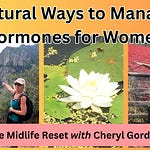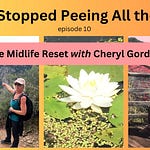Get the complete one hour class FREE here.
We think of our bones as solid structures. They hold us up! But in reality, bone tissue is some of the most dynamic in the body. It’s changing all the time.
As we age, hormonal and other lifestyle changes can cause our bones to change in less than healthy ways. Our bones can become more porous as in the case of osteoporosis. We often don’t have any outward symptoms. Until there is some weird, unexplained pain and the X-rays reveal a fracture. Then the fear of God is dumped on us. Don’t move this way! Don’t do this or you’ll snap in two!
In other cases, our medical team is alert and orders a bone scan. Then the risk of osteoporosis shows up. Again, the fear is around taking medication and other techniques to try and preserve what bone we have.
All in all, it’s a lot of scary stuff. This workshop is about addressing that fear. This is your greatest enemy… not your diagnosis.
Movement is ABSOLUTELY essential to maintaining your wellness. This is true for every body but especially true when your body has a diagnosis.
How Yoga Contributes to Stronger Bones
Many of my clients have had well meaning clinicians advise against yoga. With all due respect, my expertise is in guiding movement. I have to know what is safe and what isn’t for my clients. Other clinicians may have an area of expertise in reading the scans or knowing the pharmaceutical options. They may not have 20 years + of experience almost exclusively guiding movement.
Yoga is amazing practice for those with osteopenia and osteoarthritis. The practices may look a little different from what’s in the magazines but the main benefit that yoga has over all other forms of exercise is the mindfulness. Staying focused and present with your current activity builds balance. It’s not the porous bones that kill you… it’s the fall.
Yoga is also weight bearing. It focuses a lot of attention on the core, breathing and supporting the spine.
Understanding Bone Health
Bones are living tissues that constantly undergo a process of breakdown and rebuilding. They provide structural support, protect vital organs, and store essential minerals such as calcium and phosphorus. Bone density refers to the strength and compactness of bones, which naturally decreases with age if not properly maintained.
Osteopenia is the early stage of bone density loss, where bones become weaker but are not yet fragile enough to break easily. Osteoporosis is a more advanced condition in which bones become porous, brittle, and more prone to fractures, especially in the spine, hips, and wrists.
Bone loss can be influenced by multiple factors, including aging, hormonal changes (such as menopause-related estrogen decline), inadequate calcium and vitamin D intake, lack of weight-bearing exercise, smoking, excessive alcohol consumption, and certain medical conditions or medications that affect bone metabolism. These include corticosteroids (e.g., prednisone), which can reduce bone formation; certain anticonvulsants, which affect vitamin D metabolism; proton pump inhibitors (PPIs) that interfere with calcium absorption; and some antidepressants and thyroid medications that can impact bone density over time.
Benefits of Yoga for Bone Health
Improves balance and coordination to prevent falls. As mentioned earlier, the key factor here is the concentration and mindfulness required for poses. Yoga is the opposite of multi tasking! The brain will think what it’s been trained to think. In the practice, you train the brain to really sense where your body is in space and time (proprioception). It becomes habitual. You don’t have to really think about where to step on that icy step or how to catch yourself if you do trip. Your brain has been practising this during your poses.
Enhances posture and alignment - another thing you practice in poses, especially when they are executed mindfully, is how to stack the bones in the most efficient way. Take Mountain Pose. It’s not just standing around. It’s consciously sensing how the hips align over the legs and where the weight is in the feet and how the shoulders settle above the pelvis, etc. This also builds proprioception.
Strengthens muscles that support bones - skillful execution of asana means engaging muscles in specific and novel ways. Does your teacher ever say things like “wrap the muscle around the bone” or “feel the gluteus muscles contract”? These kind of cues build awareness of how to activate muscles for pure movement. It’s not just flinging dumb bells around (which is great exercise too - if done mindfully). When muscles contract, they pull on the bone tissue which stimulates growth. Paying attention as that contraction affects the bone makes it all the more powerful. The same exercise done the same way all the time loses its effectiveness over time.
Promotes flexibility without strain - fluid movement is confident movement. Yoga stretches should be kind of boring. Stretches that create strong sensation, big dramatic effect, may be over doing the work on the connective tissue. This can lead to joint instability. The key to safe yoga, especially as we age, is to discern exactly where the sweet spot is in any given movement. Goldilocks type movement. It’s just right.
Safety Guidelines for Yoga and Bone Health
A little bit of impact can be quite helpful to stimulate bone growth. This would be like the common pressure from walking or even a little hop. So you can still do the common Sun Salute A with a jump through for example, if that’s in your practice already.
Avoid binds. When using a strap, allow lots of room. It’s better to come into twists and forward folds just using your muscles on their own rather than pulling to reach something.
Focusing on slow, controlled movements. This allows lots of time for the brain to process the full impact of the movement. A slower pace aids proprioception.
Using props for support. The biggest set of postures that, I feel, absolutely must use props are seated. For example, the simple seated twist must be done with a vertically aligned spine. Hip joints MUST be higher than knees for the pelvis to provide a stable base for the spine. This often means a chair but sometimes a block or blanket might do. A good rule is to maintain neutral spine as often as possible in postures. Most forward folds will require modification.
Move into the practice with curiosity and confidence. Every time you hit the mat, it’s a new day. It’s natural for the poses to evolve and change as we do. It doesn’t have to mean that we’re old or weak. I like to think of this time in my life as my wisdom years. And I get to be the biggest beneficiary of my repository of knowledge. In other words, get over it and just be yoga.
Best Yoga Poses for Bone Strength
Most standing poses (ie Warrior II) strengthen legs and hips. Avoid variations that ask you to join hands behind the head or back. If there is leaning forward in a pose, such as pyramid pose, only go as far as you can maintain neutral spine. Use a chair seat or blocks instead of aiming for the floor.
Balance poses, like Tree Pose challenge your concentration and improve proprioception. They build confidence. After all, each walking step involves balancing on one leg. Keep a chair handy just in case you do wobble a bit too much that day.
Spinal extension postures like Bridge Pose, Camel, Cobra, Locust and Bow can be helpful to strengthen spinal and hip muscles. Again, avoid clasping hands and use a strap in Bow to connect hands and feet so there’s lots of ease.
Forward bending is a group of postures that is commonly in the avoid category. Caution is necessary but the functional movement is part of our lives. The main caveat is to forward fold without load on the spine. For example, cat/cow done slowly with breath is ok. Angling the body forward in pyramid, as mentioned earlier, is ok as long as you maintain neutral spine and use props. Child’s pose with arms extended out front and support under the head is preferred compared to the traditional version where the spine is flexed.
Twists are safe if one maintains a vertical spine. I like standing twists where the arms move freely. Seated twists are best done with a chair in most cases. Focus on using the oblique muscles to execute the twist to build core strength.
Poses to Avoid
Deep forward bends and twists where you are trying to achieve a certain shape or have expectations can be dangerous. These movements are natural in life but do the poses gently with lots of kindness.
High-impact aerobic style movements are contraindicated. A little bit of bounce (ie seated in chair and lightly stomping your feet on the floor) can actually be helpful.
Extreme backbends especially if you are trying to clasp hands or reach feet. When extending the spine, you’re looking for a gentle, even curve the whole length. The pose should ALWAYS be easeful and soft in which to breathe.
Poses that put excessive pressure on wrists or spine. Down dog is accessible but many people will find better freedom in the pose by using a chair. Many other postures, like plank, can be done on forearms. Using blocks under the forearms in poses like table are also freeing.
It’s not necessary to takes arms above the head in chair pose or warrior 1 for example. Explore modifying poses by placing hands in prayer or cactus arms.
Standard Shoulder Stand is out. Way too much pressure on the cervical spine. Try Viparita Karani instead. Headstand on forearms may be appropriate if alignment is meticulous and you are very experienced with the posture. Using a wall for inversions may prevent falls.
Incorporating Yoga into Daily Life
Practice regularly with consistency. Remember the brain is learning while you are doing, or not doing, your activities. We learn best with repetition. Regular practice builds proprioception.
Strength training can complement your yoga practice. I lift weights focusing on my breath and with mindfulness. Yoga postures are weight bearing especially planks, bird dog, warrior poses, bridge and locust.
Consulting a healthcare professional to build the best diet for you. It’s not just about piling on calcium. It’s worth investing in a registered dietitian or naturopath to get customized recommendations.
Commit to the full practice of yoga incorporating daily relaxation (such as restorative yoga) and meditation. Use mindfulness tools like the 3 minute breathing space and journaling to manage overall stress levels.
Summary of key points
Movement is ESSENTIAL to living a full, strong life. Allowing the fear around your diagnosis is the fastest path to limiting your longevity. Have confidence in your natural intuition and wisdom. You are the world’s expert in your body. Build a kind, attentive relationship with your body’s sensations. This is the best path forward.
Yoga is safe but you need to broaden your practice to include using props, moving more mindfully and rooting out any outdated expectations of your poses.
Try this complete yoga practice to get you started.
Find more resources at www.cherylgordonyt.com
Sign up for my newsletter to learn of new resources right away.













Share this post